The Manual of Design Fiction



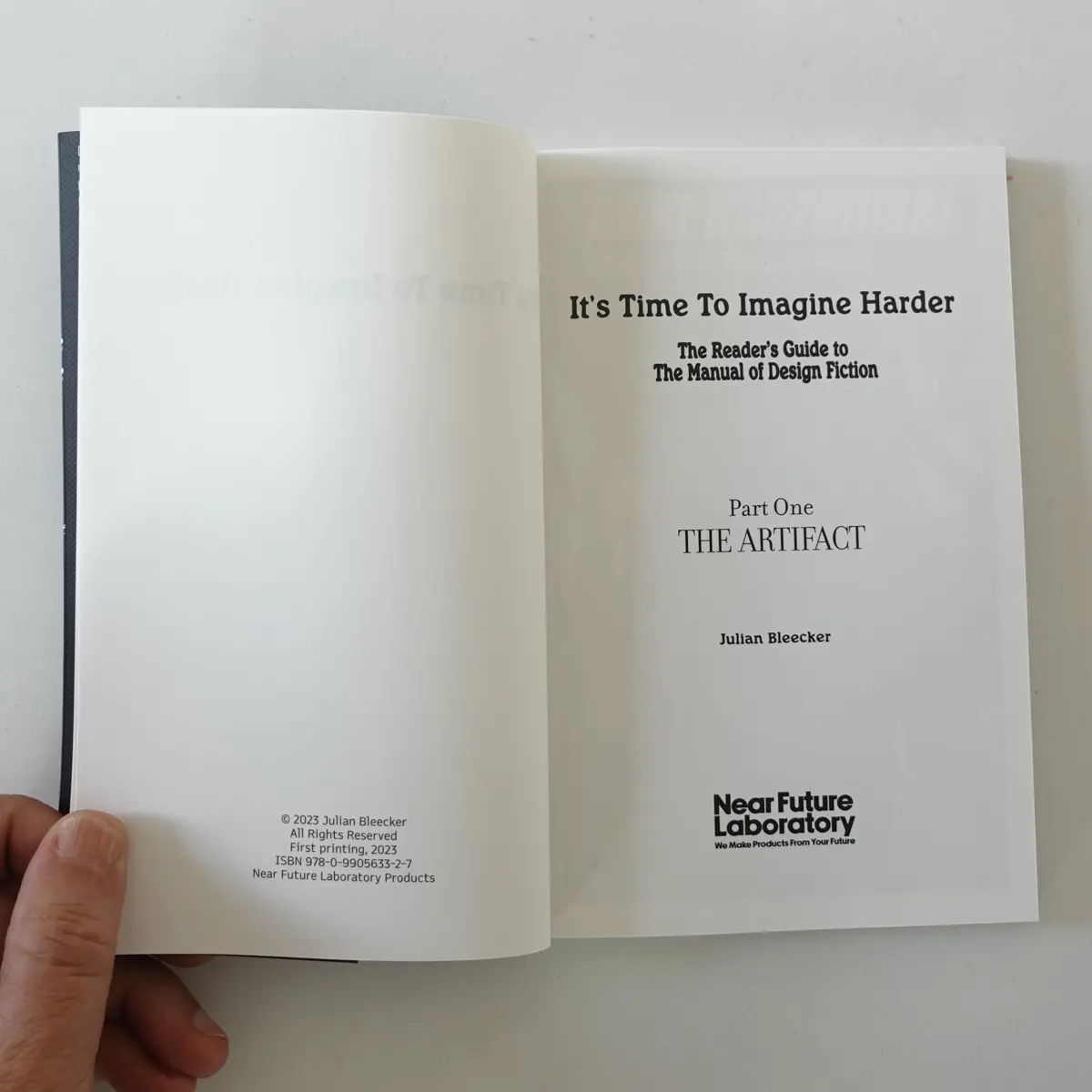
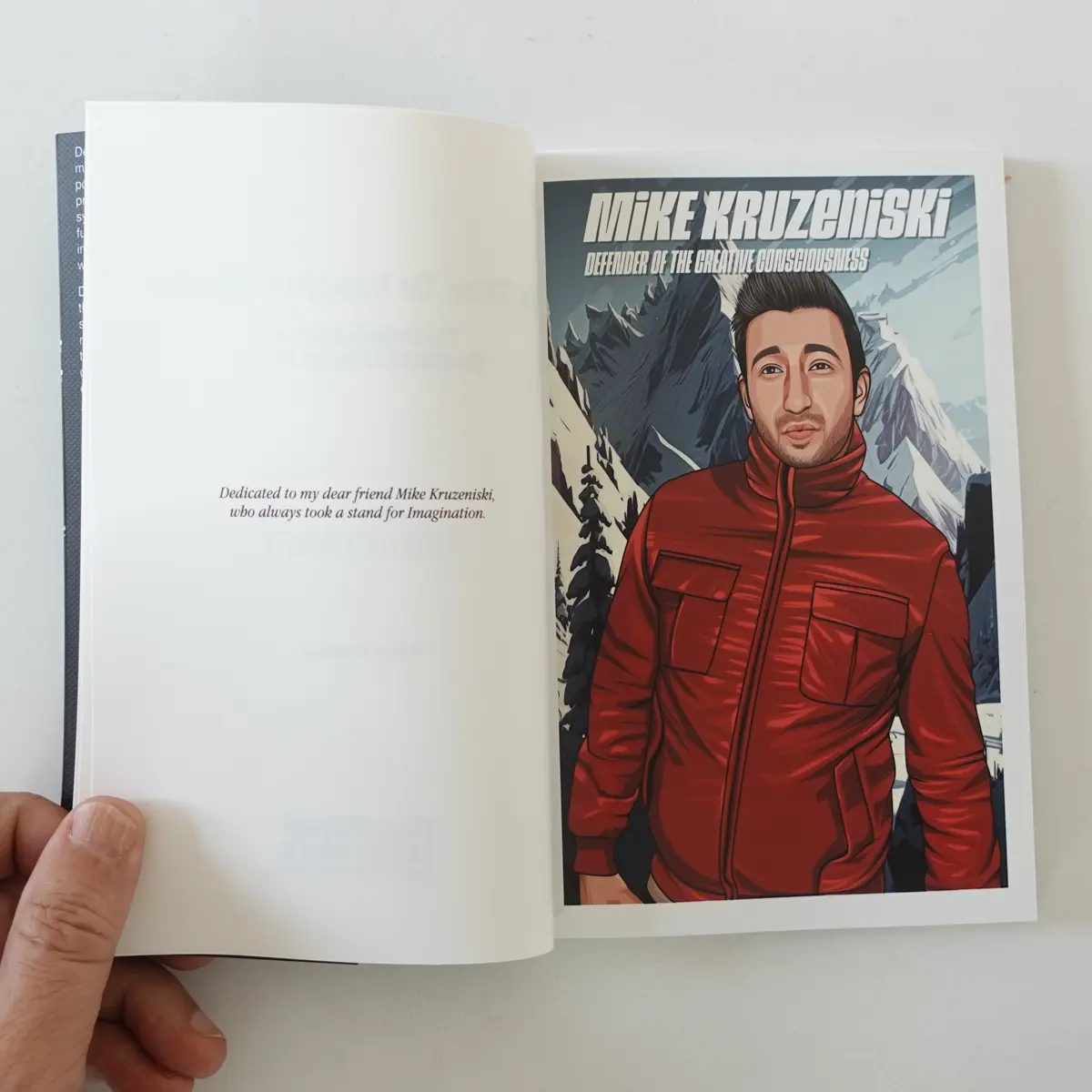
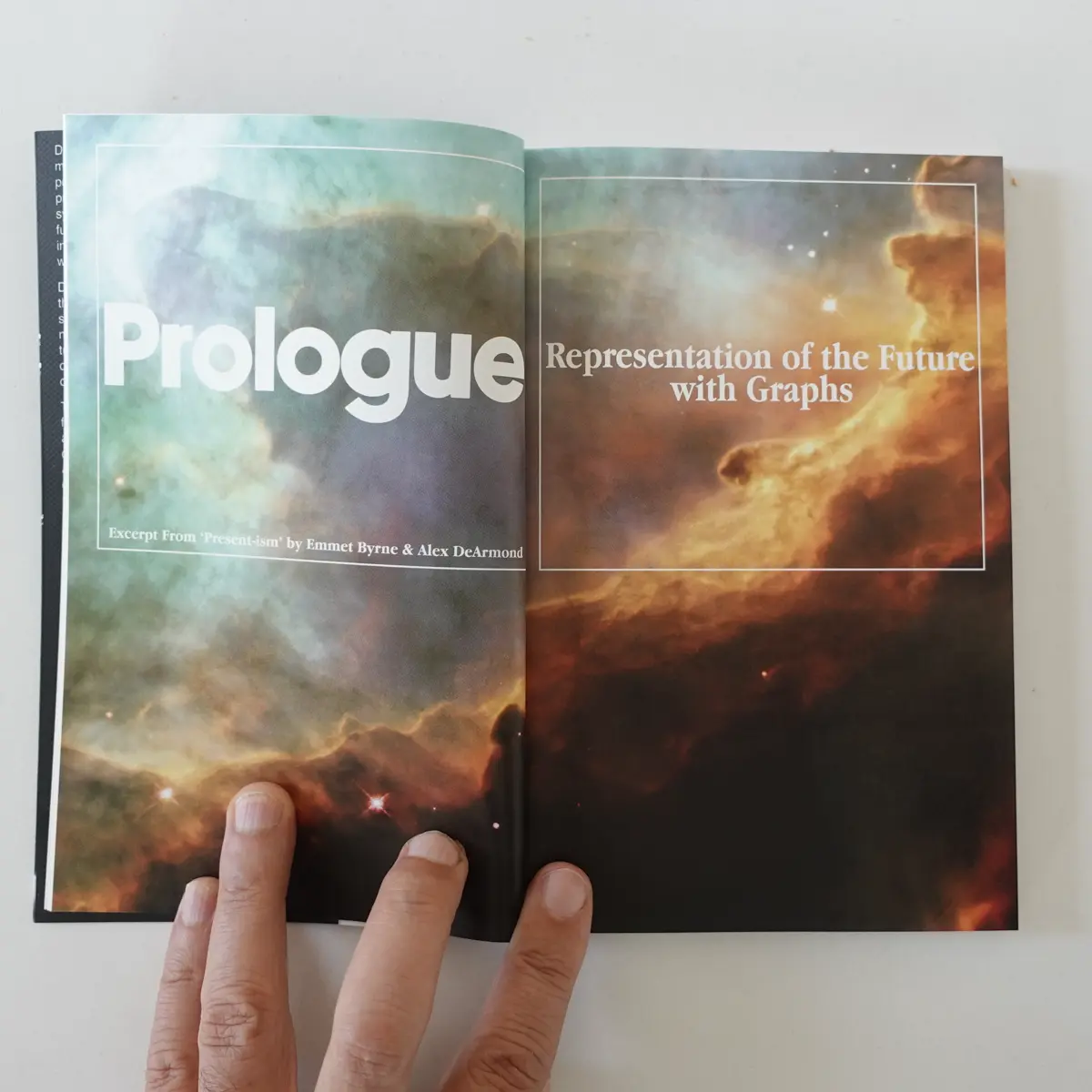


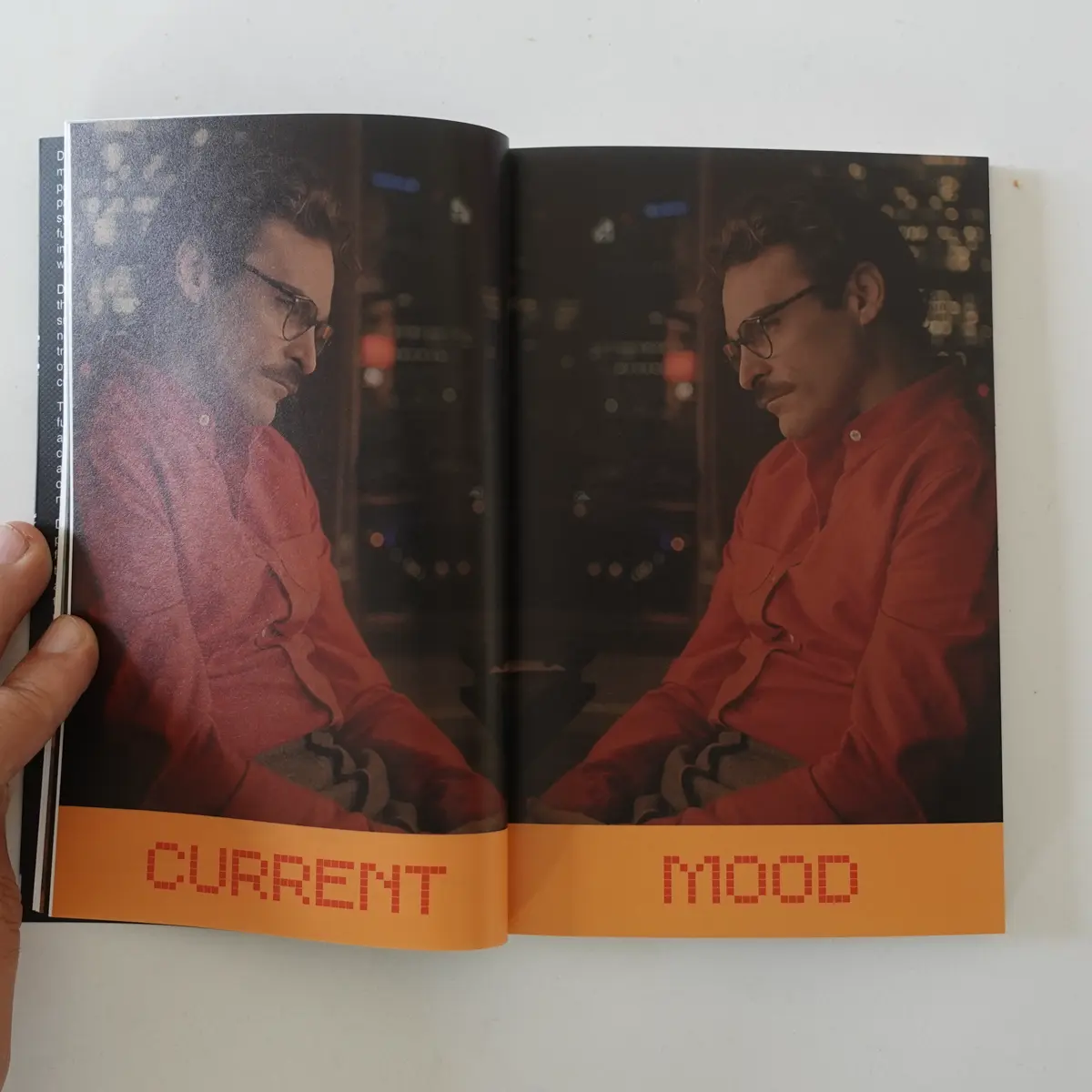











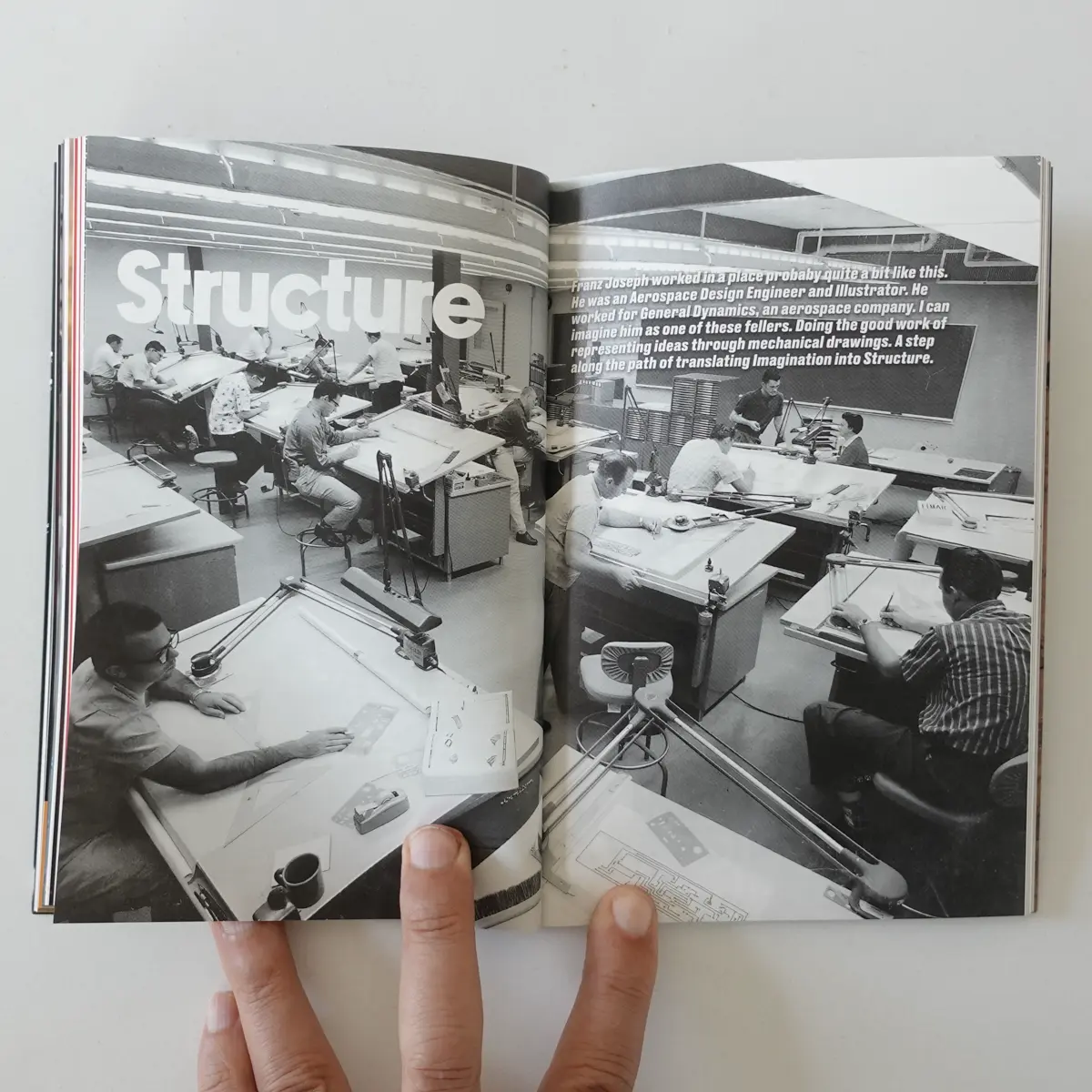
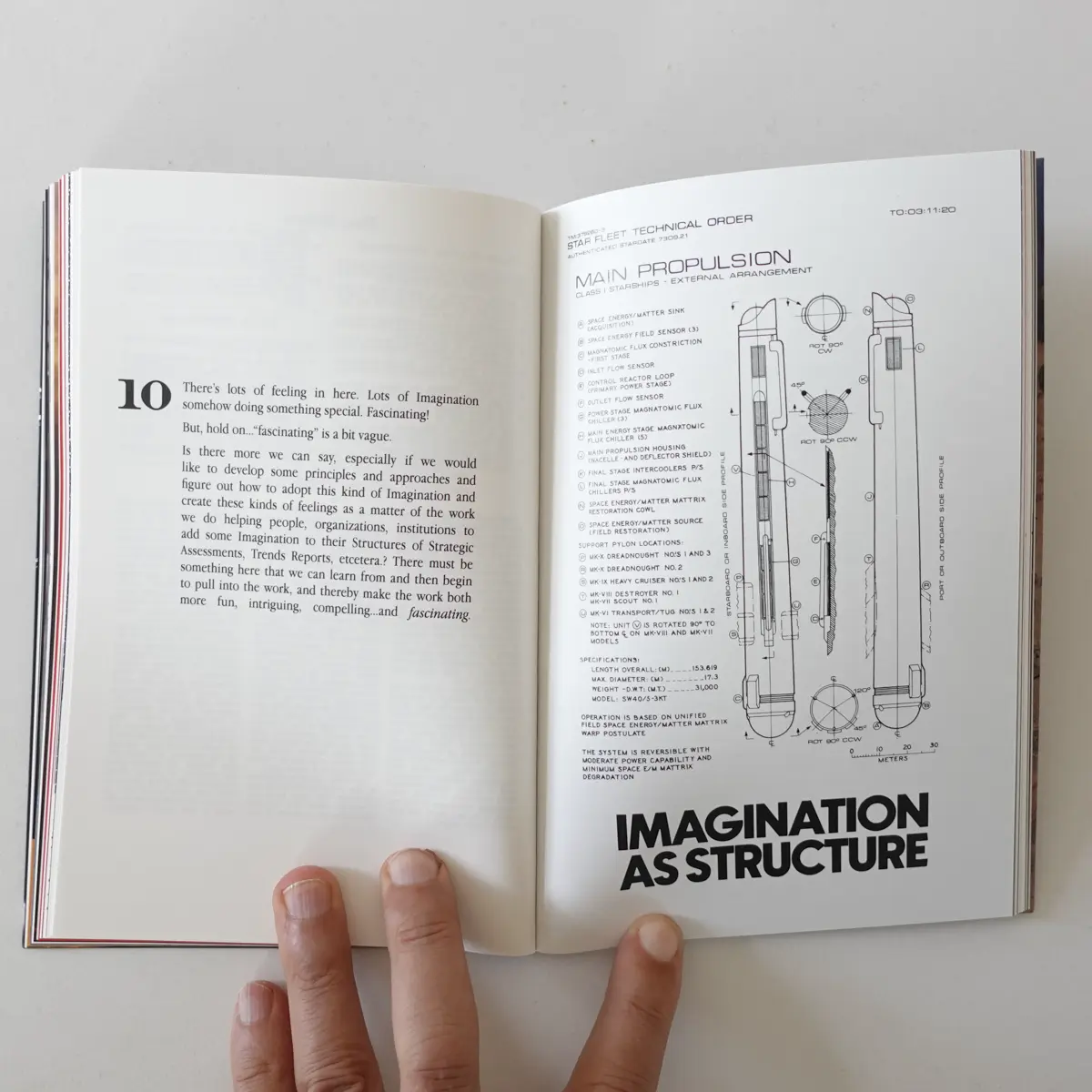

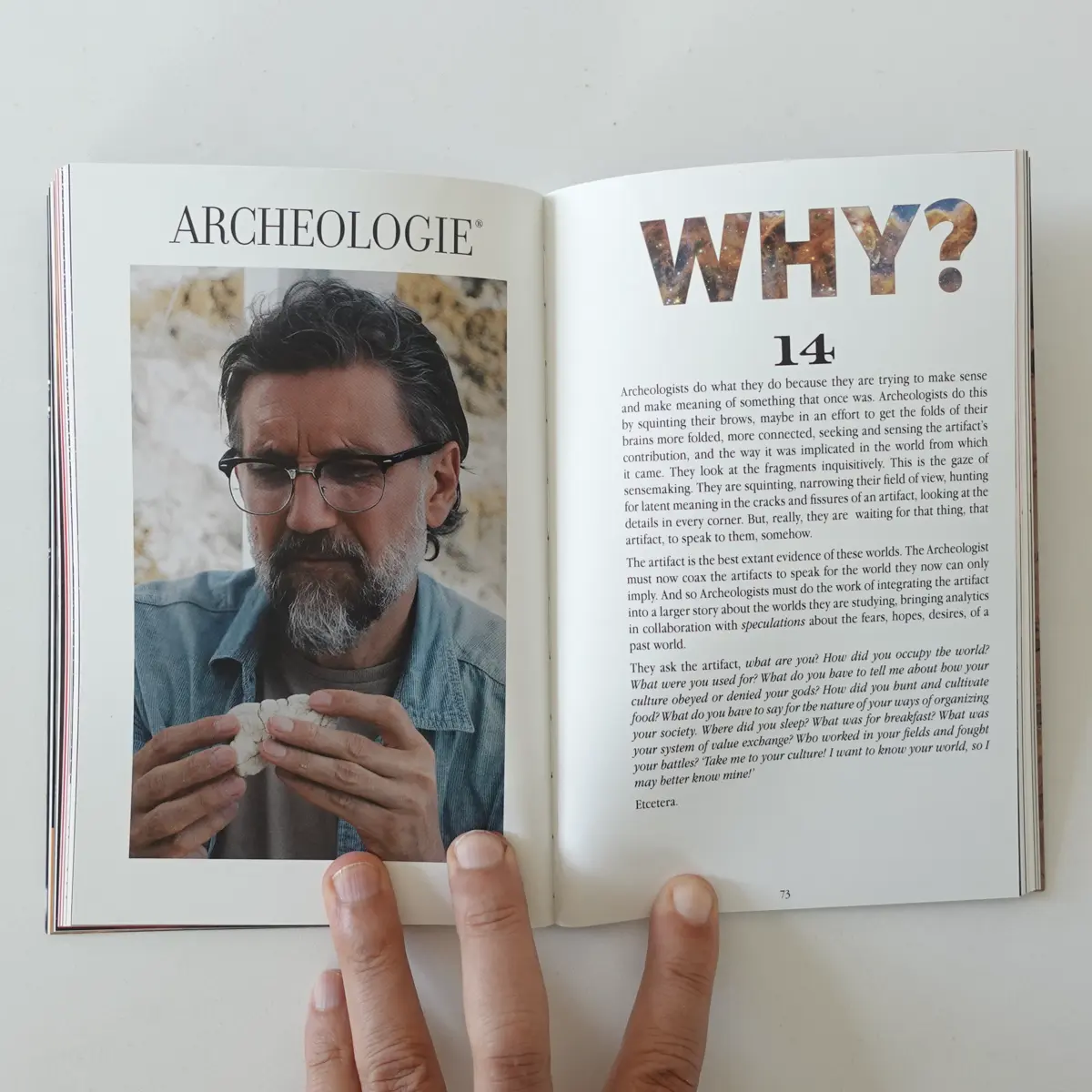







If ‘The Manual of Design Fiction’ is the How, the book ‘It's Time To Imagine Harder’ is the book that answers Why Design Fiction is of value. A kind of supplement to ‘The Manual of Design Fiction’ that emphasizes that it is not just a set of techniques and approaches, but that it has a purpose, and a purpose beyond the instrumental character of any kind of process or procedure. This book is about the concept of Design Fiction and its interconnectedness to the existential capacity we have to imagine, dream, feel, and actualize possibility. It reminds us that our capacity to Imagine is our evolutionary advantage. Imagination is the way we work our way through and around the existential challenges we (have always) faced. Imagination is the ultimate strategic ’CoolTool’.
The book represents Design Fiction as a way of translating Imagination into a form that is legible to Structure. That is, a form of representation; a way to capture the things the creative consciousness wonders, sees, dreams in ways that Structure can comprehend and in this way is a powerful collaborative tool that puts 'creatives' in rich and meaningful conversation with 'the business.' Rather than use of conventional data formats like Excel tables and PowerPoint presentations, I argue in favor of more creative and evocative storytelling methods. Ultimately, the book aims to provoke thought and spark creativity by presenting a fictional world that challenges existing norms and invites readers to imagine the world otherwise.
Design Fiction can be used as a tool to rescue creativity from extractive industrial processes and protect the existential capacity of our minds to imagine, dream, feel, and actualize possibilities. By translating Imagination into the language of Structure Design Fiction allows us to play harmless, evocative, and ultimately useful pranks on the rigid systems that seek to confine our creativity. This approach creates implications rather than representations, challenging traditional ways of thinking and sparking new ideas and innovations. Through Design Fiction, we can explore alternative worlds, challenge existing norms, and push the boundaries of what is possible. It is a way to disrupt the status quo, provoke thought, and inspire change in how we perceive and interact with the world around us.
Design Fiction can be used as a creative approach to explore and communicate possible futures or alternative realities. Based on the ideas presented in the book, Design Fiction serves as a way to rescue creativity from industrial processes that might stifle Imagination.
To use Design Fiction, one would create artifacts, products, or media from an imagined world or scenario. These creations would be presented as if they were real, existing things - like the example of a fictional magazine mentioned in the book. The goal is to make these fictional designs seem plausible and familiar enough that they provoke thought and discussion about potential futures or alternate realities.
Rather than presenting ideas as dry data or analysis, Design Fiction allows for a more evocative and engaging way to explore concepts. It's described as pulling a "harmless, evocative, effective, and ultimately useful prank on Structure." This means taking imaginative ideas and presenting them in a format that feels structured and legitimate, like a brand book for something entirely fictional.
The purpose is to translate Imagination into a form that is legible and comprehensible to more structured ways of thinking. It bridges the gap between pure creativity and the constraints of reality. By doing so, Design Fiction can potentially spark new ideas, raise important questions, or highlight implications of emerging technologies or societal changes in a tangible way.
Importantly, Design Fiction is not just about creating fantastical visions, but about exploring plausible futures or alternatives in a way that feels grounded enough to provoke meaningful consideration. It's a tool for actualizing possibilities and imagining "what else" or how the world could be otherwise.
Design Fiction can be used as a powerful tool to challenge and disrupt existing structures and paradigms. By creating compelling, tangible artifacts from imagined futures or alternative realities, Design Fiction allows us to step outside the confines of our current thinking and envision radically different possibilities.
One way to use Design Fiction would be to create a fictional product, service, or experience that embodies a provocative idea or social commentary. For example, you could design a mock advertisement for a device that allows people to selectively erase memories, raising questions about the nature of identity, privacy, and the human experience. Or you could create a series of fictional news articles describing a world where artificial intelligence has taken over most jobs, sparking discussions about the future of work, income inequality, and the role of technology in society.
Another approach would be to use Design Fiction as a means of exploring and communicating complex or abstract concepts in a more accessible and engaging way. You could create a fictional user manual for a device that enables telepathic communication, using the familiar format of a technical document to get into ideas around language, empathy, and the nature of human connection. Or you could design a series of fictional product packaging and labels for genetically modified foods, using the visual language of branding and marketing to examine issues of bioethics, sustainability, and consumer choice.
Design Fiction can also be used as a tool for strategic foresight and innovation. By creating tangible artifacts from possible futures, organizations can better anticipate and prepare for a range of scenarios, identify potential opportunities and challenges, and inspire new ideas and approaches. For instance, a company could create a fictional annual report from ten years in the future, describing the successes and failures of various initiatives and strategies, as a way to stimulate long-term thinking and encourage bold, visionary planning.
Ultimately, the power of Design Fiction lies in its ability to make the imaginary feel real and to provoke critical reflection and dialogue about the world we live in and the world we want to create. By crafting compelling, thought-provoking artifacts that blur the lines between reality and fiction, Design Fiction can help us to challenge assumptions, explore new possibilities, and inspire transformative change. Whether used as a tool for social commentary, education, strategic planning, or simply creative expression, Design Fiction has the potential to unlock our collective imagination and help us to envision and shape a better future.
I wrote his book as a way to describe the motivation behind Design Fiction, and to reveal how Design Fiction allows you to approach innovation in a new and unexpected way. Rather than focusing on predicting specific technological advancements or gadgets, which is the overwhelming approach, Design Fiction encourages one to use Imagination to explore possibility more broadly.
The book is a follow-on to The Manual of Design Fiction, which was what introduces the concept of Design Fiction. This book takes the position that Design Fiction — aside from its practical utility — is as a way to rescue creativity from ‘Structure’ that can limit the full range of capabilities Imagination can bring to bear. Instead of trying to forecast exact inventions or timelines, Design Fiction encourages you to ask open-ended questions and wonder into possible futures.
When you ‘wonder into’ something, you are not just passively observing or contemplating; you are actively engaging your imagination to transport yourself into a different mental space where new ideas, perspectives, and possibilities emerge. By wondering into, rather than just ‘wondering about’ you allow yourself to explore uncharted territories, challenge existing paradigms, and envision a world that is different from what currently exists. It’s a powerful way to unlock creativity, inspire innovation, and expand your understanding of what could be possible.
By shifting your mindset away from seeking definitive answers or making declarations about the future, you may discover new possibilities you hadn’t considered before. Noticing ordinary details - like what’s in a kitchen drawer or on a coffee table - are rich ways to uncover and present insights that could inspire invention, and may be seen as too vague or ‘not actionable enough’ to merit even being uttered.
Rather than relying on data and charts, Design Fiction encourages creating artifacts from imagined futures, like sections of newspapers or product manuals. This process of worldbuilding around potential inventions may reveal unexpected needs or applications.
The goal is to make room for Imagination to wander freely, unconstrained by assumptions about what technology “should” look like. By pondering how normal, social, and familial aspects of life might evolve, you may identify opportunities for invention that are more grounded in human experience.
Ultimately, I wrote this book to help you reset your creative mindset - moving away from serving Structure to emphatically in the pursuit of invention, inspiration, and innovation.‘
Imagination is the powerful faculty of the mind that allows us to envision possibilities, dream up stories, and make sense of the world in creative and intuitive ways. Imagination is our evolutionary advantage — the faculty that allows us to make and remake the world. It is an existential gift, a precious resource, and one we must actively cultivate and protect even as it is diminished in our use of it. In a world increasingly shaped by structure and order, imagination is the rebel force that resists constraints. It is the key to unlocking our creative consciousness and envisioning alternatives to the status quo. The more we flex our imaginative muscles, the better equipped we are to dream up a world of our own making.
A key element of the book is to set the context by which Imagination and Structure operate together, and an observation that there are times when one finds itself in service to the other, rather than in collaboration (or the one in service to the other in equal measure.)
‘Structure, in the context of the book, refers to the systems, processes, and procedures that are introduced within an organization to optimize its value exchange and operational efficiency. It is the framework that enables an organization to function effectively and achieve its goals.
Structure can be seen as a set of rules, guidelines, and constraints that shape how things are done within an organization. It defines roles, responsibilities, hierarchies, and workflows. It establishes the boundaries within which creativity and Imagination must operate.
In everyday life, Structure manifests in various forms. For example, in a household, structure may be represented by the routines and chores assigned to each family member. The designated times for meals, the division of household tasks, and the rules for maintaining order and cleanliness all contribute to the structure of the household.
In sports, Structure is evident in the rules of the game, the positions assigned to players, and the strategies employed by teams. The structure of a soccer match, for instance, is defined by the duration of the game, the size of the field, the number of players on each team, and the roles assigned to each player (e.g., goalkeeper, defender, midfielder, forward).
In the workplace, structure is embodied in the policies, procedures, and hierarchies that govern how work is done. It includes job descriptions, reporting lines, performance metrics, and standard operating procedures. Structure ensures that everyone knows their responsibilities and how their work contributes to the overall goals of the organization.
However, the book suggests that Structure can sometimes be at odds with creativity and Imagination. The creative consciousness must inevitably contend with the constraints imposed by Structure. While Structure provides stability and efficiency, it can also limit the space for creative exploration and innovation.
The challenge, then, is to find a way for Structure and Imagination to collaborate rather than conflict. When Structure and Imagination work together harmoniously, beautiful things can happen. Structure provides the foundation and framework within which Imagination can flourish. It offers the necessary constraints that can actually stimulate creativity by providing a focus and direction.
My primary argument is to say that innovation — at least the kind that finds unexpected opportunities at or beyond the vanguard of the present state — requires that collectives find the way to strike a balance between Structure and Imagination. Too much Structure will inevitably stifle creativity, while too little Structure can lead to chaos and inefficiency. The goal is to create an organization — a company, collective, squad, however you want to denominate ways of cohering human & non-human potential for creating value — in which Imagination and Structure are in service to each other and for the creation of value.